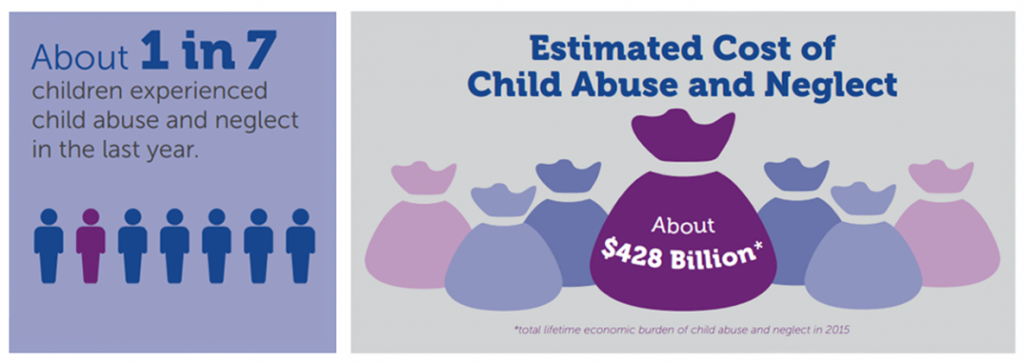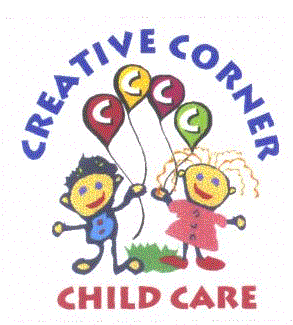Child abuse and neglect are serious public health problems that can have long-term impact on health, opportunity, and wellbeing. CDC works to understand the problems of child abuse and neglect and prevent them.
Video - English
Video - Spanish
What are child abuse and neglect?

Child abuse and neglect are serious public health problems and adverse childhood experiences (ACEs) that can have long-term impact on health, opportunity, and wellbeing. This issue includes all types of abuse and neglect against a child under the age of 18 by a parent, caregiver, or another person in a custodial role (such as a religious leader, a coach, a teacher) that results in harm, the potential for harm, or threat of harm to a child. There are four common types of abuse and neglect:
- Physical abuse is the intentional use of physical force that can result in physical injury. Examples include hitting, kicking, shaking, burning, or other shows of force against a child.
- Sexual abuse involves pressuring or forcing a child to engage in sexual acts. It includes behaviors such as fondling, penetration, and exposing a child to other sexual activities. Please see CDC’s Preventing Child Sexual Abuse webpage for more information.
- Emotional abuse refers to behaviors that harm a child’s self-worth or emotional well-being. Examples include name-calling, shaming, rejection, withholding love, and threatening.
- Neglect is the failure to meet a child’s basic physical and emotional needs. These needs include housing, food, clothing, education, and access to medical care.
For more information about preventing child abuse and neglect definitions please see Child Maltreatment Surveillance: Uniform Definitions for Public Health and Recommended Data Elements pdf icon[4.12 MB, 148 Pages, 508].
How big is the problem?
Child abuse and neglect are common. At least 1 in 7 children have experienced child abuse and/or neglect in the past year, and this is likely an underestimate. In 2019, 1,840 children died of abuse and neglect in the United States.
Children living in poverty experience more abuse and neglect. Experiencing poverty can place a lot of stress on families, which may increase the risk for child abuse and neglect. Rates of child abuse and neglect are 5 times higher for children in families with low socioeconomic status compared to children in families with higher socioeconomic status.
Child maltreatment is costly. In the United States, the total lifetime economic burden associated with child abuse and neglect was approximately $428 billion in 2015. This economic burden rivals the cost of other high-profile public health problems, such as stroke and type 2 diabetes.

What are the consequences?
Children who are abused and neglected may suffer immediate physical injuries such as cuts, bruises, or broken bones, as well as emotional and psychological problems, such as impaired social-emotional skills or anxiety.
Child abuse and neglect and other ACEs can also have a tremendous impact on lifelong health, opportunity, and wellbeing if left untreated. For example, exposure to violence in childhood increases the risks of injury, future violence victimization and perpetration, substance abuse, sexually transmitted infections, delayed brain development, lower educational attainment, and limited employment opportunities.
Chronic abuse may result in toxic stress, which can change brain development and increase the risk for problems like post-traumatic stress disorder and learning, attention, and memory difficulties.
How can we prevent child abuse and neglect?
Child abuse and neglect are preventable. There are a number of factors that may increase or decrease the risk for perpetrating and/or experiencing child abuse and neglect. To prevent child abuse and neglect violence, we must understand and address the factors that put people at risk for or protect them from violence. Everyone benefits when children have safe, stable, nurturing relationships and environments. CDC has developed a resource, Preventing Child Abuse & Neglect: A Technical Package for Policy, Norm, and Programmatic Activities pdf icon[4 MB, 52 Pages, 508] to help communities take advantage of the best available evidence to prevent child abuse and neglect. This resource is available in English and Spanish pdf icon[21MB, 52 Pages, 508] and can be used as a tool in efforts to impact individual behaviors, as well as family, community, and societal factors, that influence risk and protective factors for child abuse and neglect.
Different types of violence are connected and often share root causes. Child abuse and neglect are linked to other forms of violence through shared risk and protective factors. Addressing and preventing one form of violence may have an impact on preventing other forms of violence.
See Child Abuse and Neglect Resources for publications, data sources, and prevention resources for preventing child abuse and neglect.
